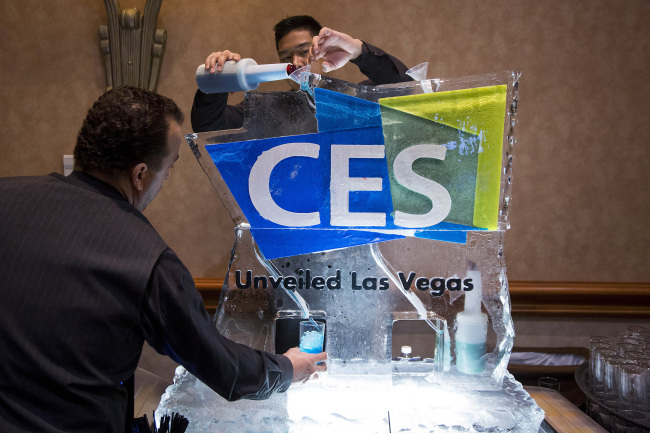LAS VEGAS ― New technology is getting more personal. So personal, it is moving to connect and analyze our movements, our health, our brains and our everyday devices.
Welcome to the so-called Internet of Me.
One of the major themes at the International Consumer Electronics Show in Las Vegas is connecting thousands of objects that people use each day ― clothing, cars, light bulbs and home appliances.
But the challenge facing developers is making that information useful, and the CES is increasingly seeing inventions related to digital “coaches” and ways to improve health or fitness, or get better information about our cars or appliances, said Shawn DuBravac, chief economist at the Consumer Electronics Association in his outlook for the show.
“The key to all of this is that something happens in the physical space, and we digitize it and feed it back into the physical space,” he said.
“No longer the focus is on what can technologically be done but what is technologically meaningful.”
Some of the new devices on display at a preview Sunday included apps to monitor and improve the quality of sleep, a connected baby bottle to measure infant nutrition intake, and sensors that analyze one‘s golf swing to compare it to that of the pros.
Smart clothing, connected smoke detectors and dozens of new smartwatches and fitness devices are also in the mix.
 |
Workers pour a blue vodka-based drink through a CES-branded ice luge during the CES Unveiled press event ahead of the 2015 Consumer Electronics Show in Las Vegas, Nevada, U.S., on Sunday. (Bloomberg) |
Smartwatches and other wearables are far more prominent at the show than ever before.
These new technologies “continue the trend of deploying the Internet in a personal way,” DuBravac said. “Nothing gets more personal than wearables.”
He said this represents a “third phase of the Internet,” after personal computers and mobile devices, to wearables and other connected objects.
“We are moving the Internet now from two billion smartphones to 50 billion objects,” he said.
“We are taking the Internet to new places, to your wrist. And you are going to see that across the show ... It’s not just about the distribution and dissemination of information. The way we use the Internet will change.”
CES, which officially opens Tuesday, is one of the world‘s biggest trade fairs devoted to technology, with some 36,000 exhibitors and an estimated 160,000 people in attendance.
The show also features new big-screen televisions with “ultra” high-definition displays, and an array of drones for personal and industrial uses. It also includes expanded sections for robotics and automotive technology.
The exhibition opens amid a mixed economic outlook for the global technology industry. The Consumer Electronics Association, which organizes it, said spending on technology rose a mere one percent in 2014 to $1.024 trillion, but that it is too early to know the trend for 2015.
“We have a very mixed spending picture,” CEA analyst Steve Koenig said.
The market is being driven by strong demand for new products like tablets and smartphones in emerging economies in Asia, and by modest economic growth in North America.
The picture is clouded by economic stagnation in the eurozone and Japan and “weak expectations” in big emerging economies such as Brazil, Koenig explained.
Russia, another large emerging economy, is being hit by economic sanctions that could dent tech spending.
The association predicted a drop in tech spending of five percent in Europe and Latin America, and it remains unclear whether the rest of the world will pick up the slack.
Koenig said smartphone and tablet sales are growing at a healthy pace in China and other developing economies, and demand for new televisions is being driven by a “robust upgrade cycle” to the “ultra” high-definition displays.
At the same time, spending is being capped by the decreasing price for new mobile devices.
“A flood of low-cost devices is coming into the marketplace,” he said, noting the prominence of phone makers in China such as Xiaomi, which has pushed into the top ranks of manufacturers. (AFP)








